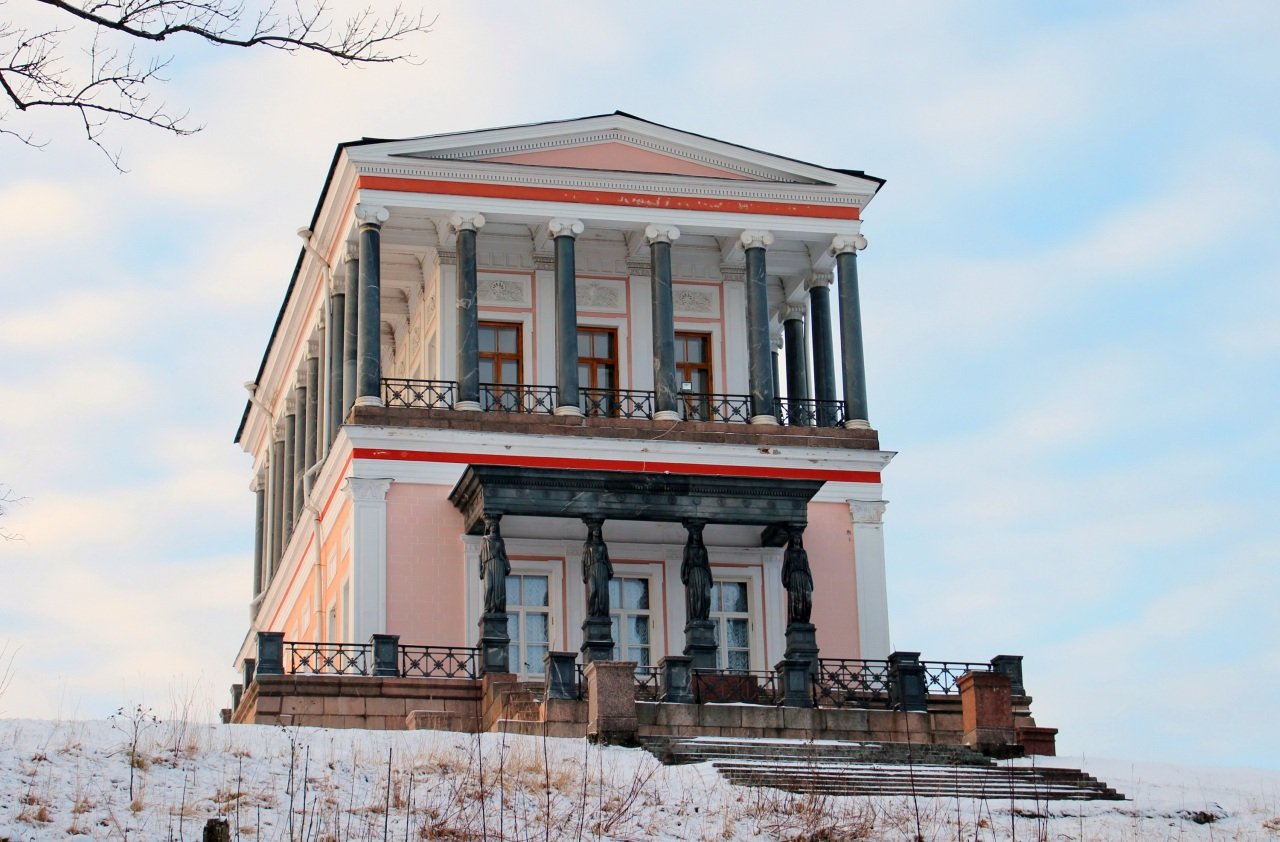Facade #170
Before us stands a magnificent example of neoclassical architecture, likely dating to the late 18th or early 19th century. The building is a pavilion in the Russian classical style with pronounced elements of ancient classical orders. This two-story structure features a symmetrical composition and rich decorative elements.
The upper floor is adorned with an imposing colonnade of Corinthian capitals supporting a triangular pediment. The columns are made of dark material, presumably granite or marble, creating a striking contrast with the white decorative elements and soft pink walls. Between the columns are tall window openings with wooden frames, fronted by wrought iron balcony railings.
The lower floor is distinguished by the use of caryatids — female sculptural figures serving as columns and supporting the upper tier. This is a classical element of ancient Greek architecture, giving the building particular refinement and monumentality. The façade of the first floor is also decorated with window openings and framed with ornamental elements.
The building is situated on an elevation, approached by a staircase partially covered with snow, which adds ceremonial grandeur to the composition. The surrounding winter landscape emphasizes the elegance and cultural significance of this architectural monument, which likely served as a country pavilion or small palace within an estate complex.
